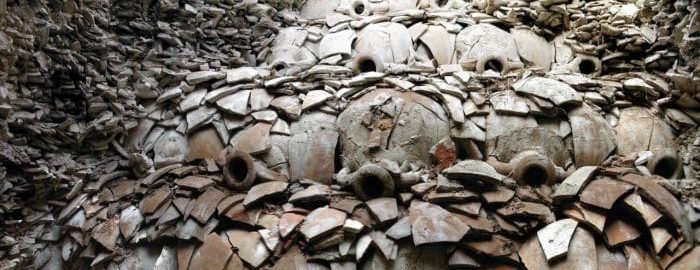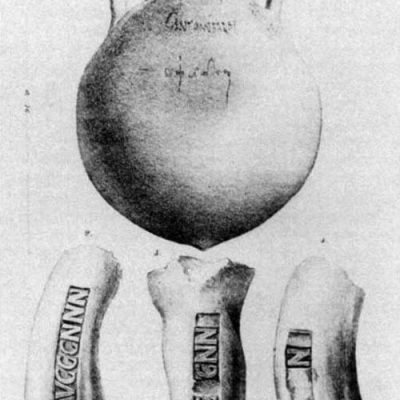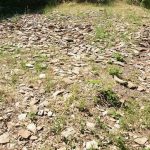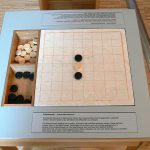Chapters
In Rome, there is an artificially built mountain, which entirely consists of fragments of about 53 million Roman amphoras, in which olive oil was stored. It is the largest Roman dump – the so-called Monte Testaccio (also called Monte Testaceo or Monte dei cocci; in English Testacio).
Monte Testaccio practically consists only of testae – fragments of broken amphoras. Based on their marking – the so-called tituli picti – scientists evaluated their origin for the Roman Empire. As it turns out, this is the largest Roman dump, which covers an area of 20,000 m2 and has a volume of 580,000 m3. Its circumference is almost 1 kilometre and height 35 m, but in ancient times it was probably much larger. According to researchers, the mountain consists of pieces of up to 53 million different amphoras – thus it is calculated that 6 billion litres of oil were imported to Rome.
The “mountain” stands a short distance from the eastern bank of the Tiber, near Horrea Galbae, in which at the end of the 2nd century CE state-controlled oil reserves were kept. According to research, it is estimated that the largest amount of amphorae were thrown away in the 2nd century CE when 130,000 amphoras were dumped annually. Most vessels had about 70 litres of capacity, suggesting that at least 7.5 million litres of oil were imported into Rome every year.
Specialists suspect that the Monte Testaccio dump was very well managed by a dedicated city unit. Excavations carried out in 1991 showed that the heap was erected as a series of horizontal terraces with retaining walls made of almost intact amphoras filled with fragments, ensuring the stability of the structure. In some places, layers of small debris were built up, presumably serving as paths for people carrying out waste disposal work. The empty amphoras were probably transported upstairs on the backs of donkeys or mules and mashed there, and the shells were broken down to obtain a stable structure. It seems that crushed limestone was poured onto the broken dishes to neutralize the smell of rancid oil.
It is hard to say when Monte Testaccio began to form because the oldest amphoras are at the very bottom, but it is suspected that the first remains of the vessels began to be transported in the 1st century CE.
Why amphoras were not being reused?
Interestingly, Monte Testaccio consisted only of large amphoras, where they were all used to transport oil. Destroyed amphoras were used only for transporting the product on ships; then the oil was poured into smaller vessels, and the main amphora was destroyed. Interestingly, no similar landfill sites for wine or grain were found.
The question that arises is: why couldn’t it be used again? The answer is not clear. Scientists believe that such large vessels could simply not be recyclable. Smaller amphoras, which could no longer be useful for transport and storage, used to break up into small pieces that served as a concrete filling material (so-called opus signinum). From larger amphoras, it was difficult to reach small pieces, which made it more convenient to simply store them in a landfill.
In addition, researchers note that oil-soaked pieces of ceramics could give the concrete insufficient strength – the oil reacts with lime and produces soap.
Tituli picti
As mentioned earlier, the remains of amphoras still have so-called tituli picti – painted or embossed inscriptions containing information on the weight of oil in the container, names of people who weighed the oil and registered data, and the name of the province where the original containers were filled with oil. Thanks to this, researchers learned, among others, that olive oil in amphoras was imported on behalf of the state and was intended for annona urbis (distribution among the inhabitants of Rome), annona militaris (distribution for the army) or prefectus annonae (food distribution officer).
Moreover, the inscriptions on the amphoras prove how extensive the control apparatus of the Roman economy was. First, the empty amphora was weighed, and its weight was applied to the back of the vessel. Then the name of the exporter was placed there and in the next line the weight of the oil contained in the amphora (after deducting the weight of the amphora itself). Those responsible for carrying out and supervising weighing inscribed on their amphora their names and the location of the farm where the olive oil came from. The amphora maker was often identified by a stamp on the vessel handle.
It is suspected that the end of the use of Monte Testaccio occurred in the second half of the 3rd century CE, due to the transfer of the city’s quays to another place, but also the fact that at that time a new type of amphora for transporting oil was introduced. In addition, researchers believe that over time, material needs required the reuse of amphorae for construction work.







